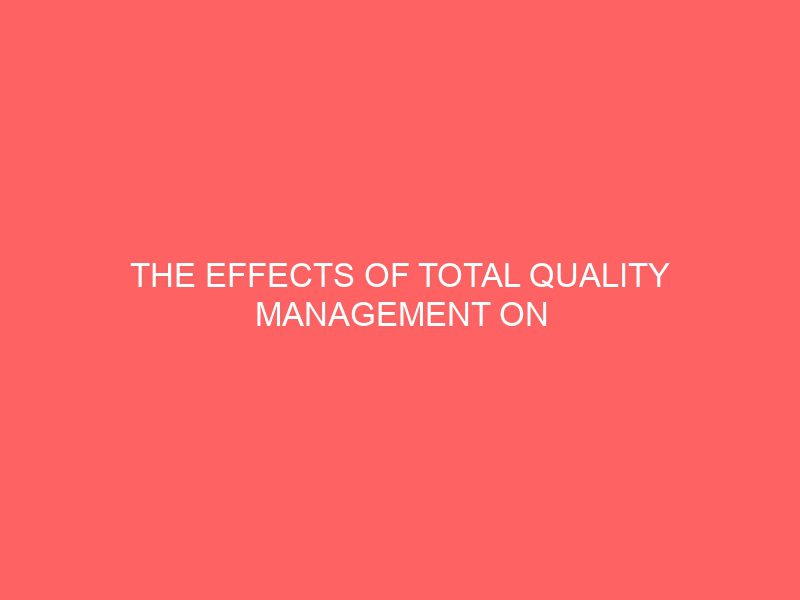Description
TABLE OF CONTENTS
Approval Page ii
Certification iii
Dedication iv
Acknowledgement v
Abstract vi
CHAPTER ONE:
INTRODUCTION
1.1 Background of the study 1
1.2 Statement of the problem
1.3 Statement of the objectives
1.4 Research questions
1.5 Hypotheses of the study
1.6 Significance of the study
1.7 Scope of the study
1.8 Limitations of the study
CHAPTER TWO
LITERATURE REVIEW
2.1 Introduction
2.2 Review of relevant literature on T.Q.M
2.2.1 T.Q.M overview
2.2.2 The importance of people in T.Q.M
2.2.3 Quality measurement and business excellence
2.2.4 Quality improvement verses quality assurance
2.2.5 Implementation of principles
2.2.6 Steps in managing the transition
2.2.7 Key improvement concepts
2.2.7.1 Process and systems
2.2.7.2 Customers and suppliers
2.2.7.3 Quality
2.2.7.4 Benchmarking
2.2.7.5 Teams and teamwork
2.2.8 The concept of continuous improvement by T.Q.M
2.2.8.1 Basic principles of T.Q.M
2.2.9 Key element of T.Q.M
2.2.10 Steps to total quality management T.Q.M
2.2.11 The concepts of culture
2.2.12 Applying T.Q.M in T.Q.M in academics
2.2.13 The success of T.Q.M
2.3 Measurement of organizational
CHAPTER THREE
METHODOLOGY
3.1 Research design
3.2 Source of data
3.3 Area of study
3.4 Population of the study 38
3.5 Determination of sample size
3.6 Reliability test
3.7 Validity test
3.8 Techniques for data analysis
CHAPTER FOUR
PRESENTATION OF DATA
4.1 Presentation of data
4.2 Test of hypotheses
4.3 Discussions of findings
CHAPTER FIVE
SUMMARY, CONCLUSION, RECOMMENDATION
5.1 SUMMARY
5.2 CONCLUSION
5.3 RECOMMENDATION
Bibliography
Appendix








Reviews
There are no reviews yet.